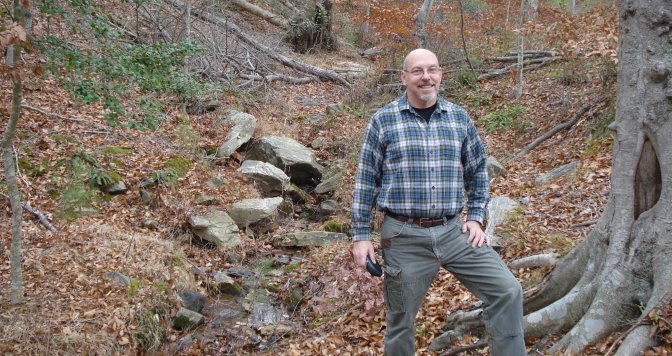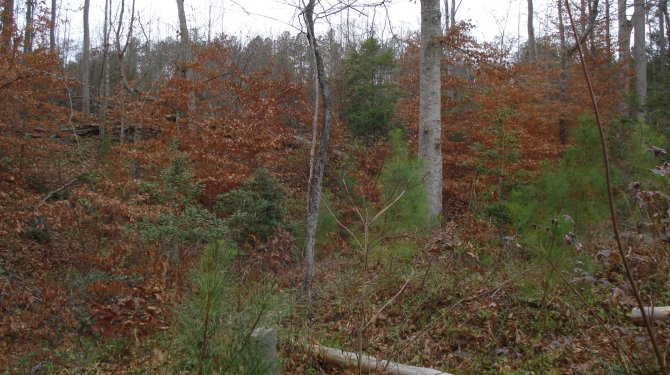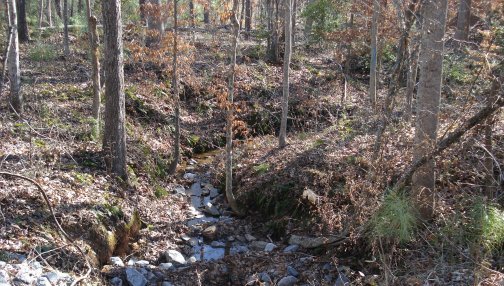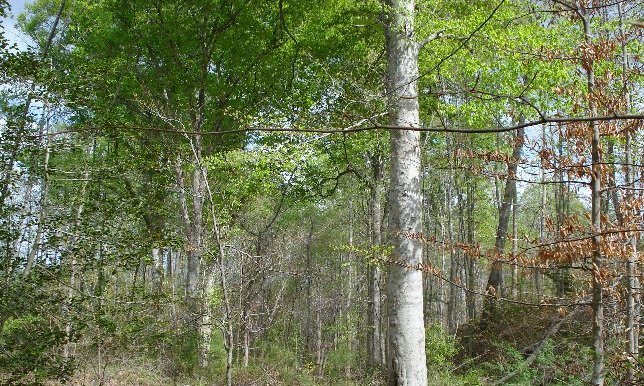In Wisconsin, beech trees are native only within the fog distance of Lake Michigan, so you find them in Grant Park along the lake but not a couple miles inland. They are common in the Middle Atlantic States and in Central Europe. It is hard to tell the European beech from the American. The European comes in more horticultural varieties, so if you see one at the nursery it is probably a European beech.

Beech trees are shade tolerant. They show up only near the end of natural succession and you find them in old well-established sites with rich and well developed soils. When you see lots of beech trees, you know that the place has not been disturbed very much for a long time. I am very fond of the beech trees along the stream beds. This is my hardwood legacy forest. You can see from the picture below that the young trees are beech. They are the ones with the brown leaves. This is a good time to see them. They stand out, since they characteristically keep their dead leaves until pushed off by the new ones in spring.

Nobody will cut this forest as long as I am alive. Right now we have some big beech trees, along with oaks, red maples, tulip poplars & ash. In a generation the beech will be more dominant. The big tulip trees will start die out. The little pines you see in the picture above are volunteers. They need to grow in the sun and none of them will reach maturity. The oaks will not regenerate in the shady forest but they live for centuries and will be around for a long time yet. Beech and oak are both mast producers and provide good wildlife food. The understory already has a lot of holly. More will fill in.

I am not leaving this forest completely alone. When this land was part of somebody’s farm, they high graded (i.e. took out the biggest trees and left the little ones). This degraded the quality of the stock and there are some old but small trees that are just sucking up resources. Other trees were damaged by ice storms past. I am cutting out the runts and the damaged trees to make more room for the robust young ones. A well managed forest just looks untouched.

Above is spring of this year.
